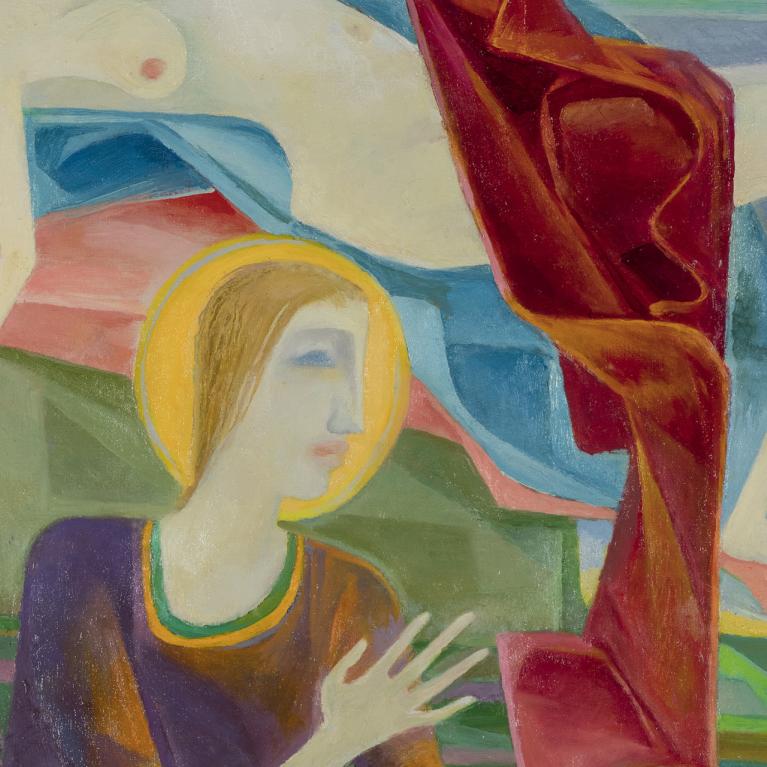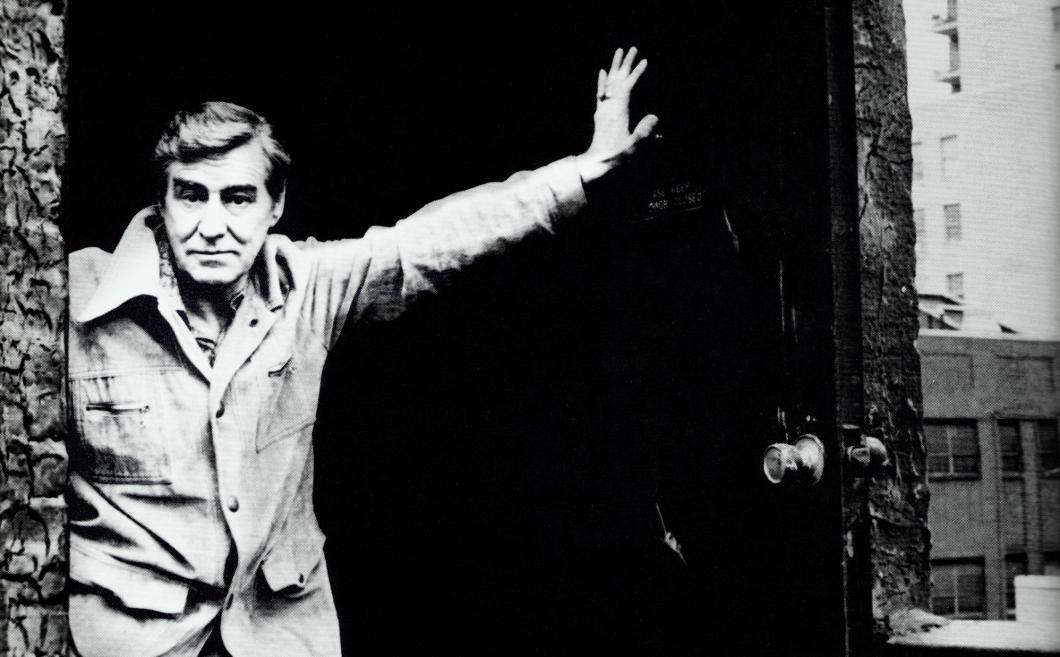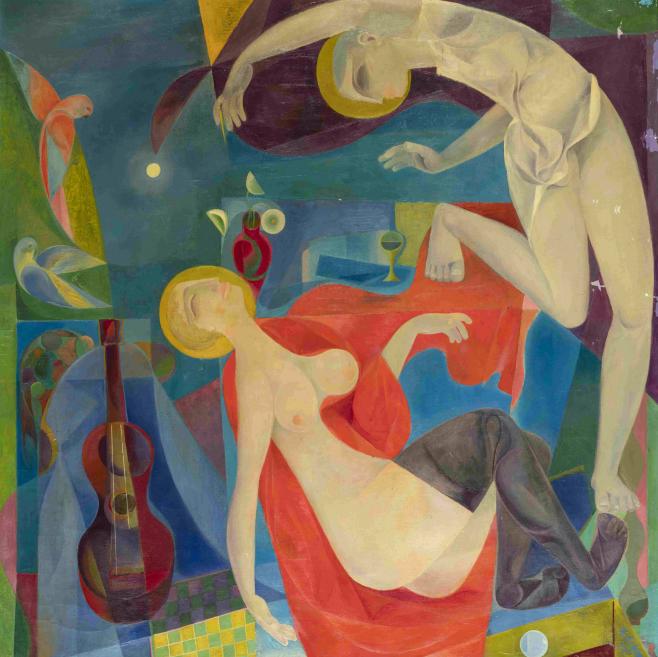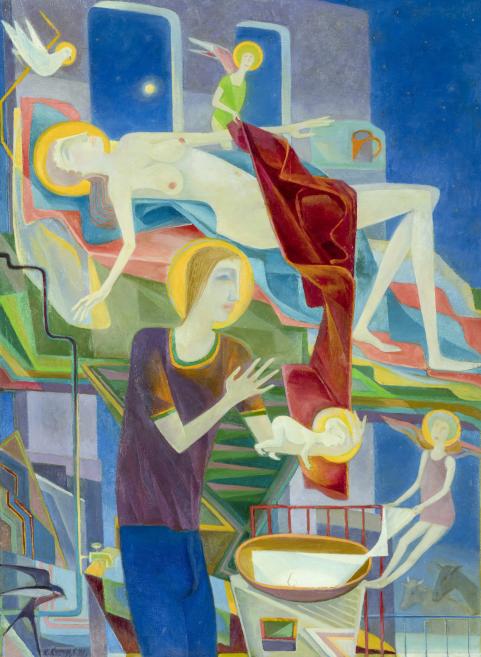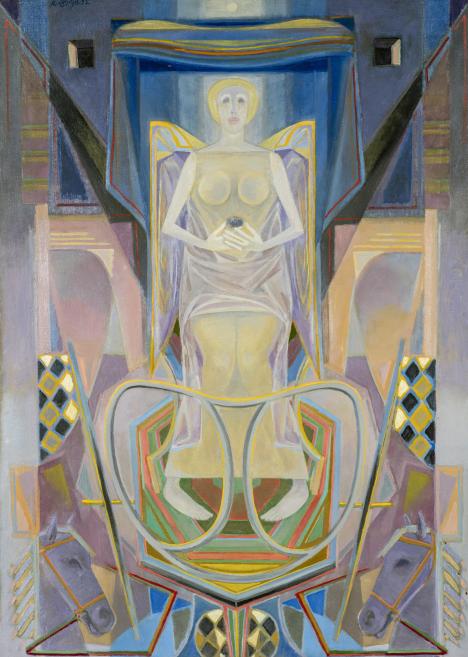Deadly Serious Rolands Kaņeps
From 11 May to 25 August 2024, the exhibition Deadly Serious Rolands Kaņeps, part of The Generation cycle, is on view in the right wing galleries of the 2nd floor of the main building of the Latvian National Museum of Art in Riga (Jaņa Rozentāla laukums 1).
Rolands Kaņeps (1925, Riga – 2011, New York) is not only an outstanding painter but also a refined connoisseur and collector of antiquities. The artist’s creative career was extraordinary. Kaņeps began his education in Latvia, in the art studio of Jūlijs Matisons and Jānis Roberts Tillbergs. The teaching staff also included Kārlis Brencēns, whose book Kā vecie lielmeistari darināja savas gleznas [How the Old Great Masters Made their Paintings] served as a source of reference in his later life. World War II radically intruded upon Rolands Kaņeps’ life, in autumn 1944 having been captured in the streets of Riga, he ended up in Germany, moving to Austria a few months later. Kaņeps continued to paint and participate in exhibitions in Salzburg, Graz, Linz and this determination was further strengthened by the positive feedback from art professionals.
In 1949, Kaņeps found the opportunity to leave for the USA, and New York becomes his city. While living in this epicentre of art and culture, Rolands Kaņeps nevertheless remained indifferent towards the new artistic movements of the second half of the 20th century. Likewise, Kaņeps did not quite fit into the overall picture of émigré Latvian art and did not conform to the conventions of Latvian identity.
Rolands Kaņeps was a sought-after and highly regarded interior designer, yet to this occupation he devoted only such an amount of his time as not to interfere with his painting. In the late 60s and 70s, Kaņeps’ works almost never appear in exhibitions, his heyday come in the decades that follow. The impasto expression of his early works is replaced by its complete opposite – a sharp drawing, clear, varnished brushwork, an almost mathematically planned composition. Kaņeps’ modest, cabinet-sized abode in Manhattan, fitted with period furniture from different centuries and finds from antique shops, brought there by owners out of ignorance, was a gathering place of writers and artists. Yet in this whirlwind of bohemia Kaņeps remains reclusive in the most important matter – painting for the sake of himself and the art of painting.
Rolands Kaņeps was captivated by the elegance of 16th century Mannerism and the ease with which artists played with the artistic ideals of the preceding centuries. In Biblical scenes, the sensuality and aesthetics of the bodies oddly dominate over the Christian ideas contained in the work, offering a biting irony about the “noble” values of the society of his time. It turned out that the artist as well as his work can also be annoying.
In decoding Kaņeps’ interpretations of ancient myths, the works’ titles play a significant role. When approached during exhibitions or among people close to him Kaņeps was a good storyteller, yet the artist’s commentary has only been preserved for a few works. Even in these conversations, while barely touching on what is important, he digresses to provocatively trivial details as though never fully trusting his listener.
The contents of Kaņeps’ works are also often linked to his homosexuality, which was not a secret, yet this aspect of life was never mentioned. Nudity and eroticism in his mythological subjects are a direct reference to the means of ruining a man available to an Olympian / earthly goddess. The creatures painted by Kaņeps possess power and energy to disarm, fool or kill a man, or simply run away and lead exciting lives in a demonic environment. They succeed in upending God’s designs through their independence. Kaņeps also picks out rarely-mentioned biblical or mythical episodes, turning them through a simple re-telling into a drama of questionable morals, where even the traditionally positive hero no longer appears that way.
In 2017, Rolands Kaņeps’ works arrived in Latvia as a bequest to the collections of the Latvian National Museum of Art (LNMA) and the Global Centre for Latvian Art (PLMC) in Cēsis. In 2020, PLMC held an exhibition of Rolands Kaņeps’ oeuvre under the title Tēlu karuselis [Carrousel of Images].
This certain exhibition at the Latvian National Museum of Art for the first time presents Rolands Kaņeps’ works in one place.
Text by Ilze Putniņa
About the exhibition cycle The Generation
Each generation belongs to an era. The Latvian National Museum of Art’s (LNMA) exhibition cycle The Generation began in 2016, focusing on art of the second half of the 20th century. The cycle’s programme is realised in the 4th Floor Exhibition Halls and since 2021 also in the right wing exposition halls on the 2nd floor of the main building of LNMA. The exhibitions devoted to many important figures in Latvian art have been held, such as Boriss Bērziņš, Felicita Pauļuka, Daina Riņķe, Henrijs Klēbahs, Līvija Endzelīna, Hilda Vīka, Gunārs Krollis, Džemma Skulme, Romualds Geikins, Daina Dagnija, Jānis Pauļuks, Māra Kažociņa, Inta Celmiņa, Auseklis Baušķenieks, Gunārs Cīlītis, Jānis Aivars Karlovs, Biruta Baumane, Lea Dāvidova-Medene, Imants Vecozols, Rūsiņš Rozīte, Biruta Delle, Aija Jurjāne, Rolands Kaņeps. There are exhibitions in preparation for Līga Purmale, Māra Vaičunas, Aija Ozoliņa.
Text by Elita Ansone

